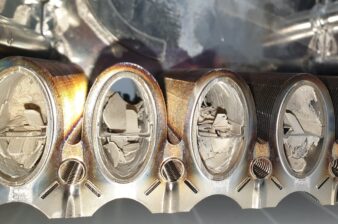ATLANTA—Outdated internal equipment heat gain data can result in oversized systems and higher operating costs, yet it is one of the most difficult areas for engineers to define.
To assist the building environment industry in defining these loads and designing more cost-efficient systems, internal equipment heat gain and load density data have been updated in the newest edition of the ASHRAE Handbook.
The flagship of ASHRAE’s Handbook series, the 2013 ASHRAE Handbook–Fundamentals’ 39 chapters cover basic principles and data used in the HVAC&R industry, including updated information on building materials, load calculations, energy resources and analysis, refrigerants, indoor environmental quality (IEQ), sustainability, controls, duct and piping system design and more.
Major revisions were made to Chapter 18, Nonresidential Cooling and Heating Load Calculations, including the new internal heat gain data and recommendations, an elevation correction example and an equation summary.
“Older assumptions based on out-of-date computer, copier and printer heat gains can result in significantly oversized HVAC systems resulting in higher first cost and operating cost,” Steven Bruning, Handbook subcommittee chair of Technical Committee 4.1, Load Calculation Data and Procedures, said. “The new data in the Handbook chapter reflect ongoing ASHRAE Research results.”
The chapter also includes an entirely new master example section based on the renovated ASHRAE Headquarters building. The updated example reflects current practice in energy efficient building construction, lighting loads and updated Standard 90.1, Energy Standard for Buildings Except Low-Rise Residential Buildings, compliance, as opposed to the previous example, which reflected 1990s practice.
Additionally, the climatic design content of 2013 Fundamentals has been expanded to include data from nearly 900 more worldwide reporting stations than the 2009 volume—a 16 percent increase. Chapter 14, Climatic Design Information, now contains temperature and humidity design conditions and related information for 6,443 locations in the U.S., Canada and other countries around the world. The increase in the number of weather station’s data is as a result of ASHRAE Research Project 1613.
“The increased number of stations, particularly noticeable in North and Central America (+26 percent), results in a better geographical coverage and enables designers to find a station closer to the location for which a building is designed,” Didier Thevenard, chair of Technical Committee 4.2, Climatic Information, said.
Each station’s data now also include monthly precipitation, used in particular to determine climate zones in Standard 90.1. The method and supporting data to calculate solar irradiance during clear sky conditions were also updated.
Other new information can be found in Chapters 2, Thermodynamics and Refrigeration Cycles; 5, Two-Phase Flow; 9, Thermal Comfort; 10, Indoor Environmental Health; 11, Air Contaminants; 16, Ventilation and Infiltration; 19, Energy Estimating and Modeling Methods; 21 Duct Design; 23 Insulation for Mechanical Systems; 25, Heat, Air and Moisture Control in Building Assemblies—Fundamentals; 26, Heat, Air and Moisture Control in Building Assemblies—Material Properties; 27, Heat, Air and Moisture Control in Building Assemblies—Examples; 29, Refrigerants; 30, Thermophysical Properties of Refrigerants ; and 36, Measurement and Instruments.
Chapters in the ASHRAE Handbook are updated through the experience of members of ASHRAE technical committees and through results of ASHRAE Research reported at ASHRAE conferences and published in ASHRAE special publications and in ASHRAE Transactions.
The 2013 ASHRAE Handbook is published in two editions: inch-pound (I-P) units of measurement and the International System of Units (SI).
The new 2013 volume will be added to ASHRAE Handbook Online by the end of June. Members can subscribe for $49 (list $249) and get immediate, searchable access to all four volumes in both I-P and SI units.
The cost of the 2013 ASHRAE Handbook—Fundamentals, which includes the CD is $199, in I-P or SI. The 2013 ASHRAE Handbook CD, which contains both the I-P and SI editions, costs $179.
To order, contact ASHRAE Customer Service at 1-800-527-4723 (United States and Canada) or 404-636-8400 (worldwide), fax 404-321-5478, or click here.
ASHRAE, founded in 1894, is a building technology society with more than 50,000 members worldwide. The Society and its members focus on building systems, energy efficiency, indoor air quality, refrigeration and sustainability. Through research, standards writing, publishing and continuing education, ASHRAE shapes tomorrow’s built environment today




Join the conversation: